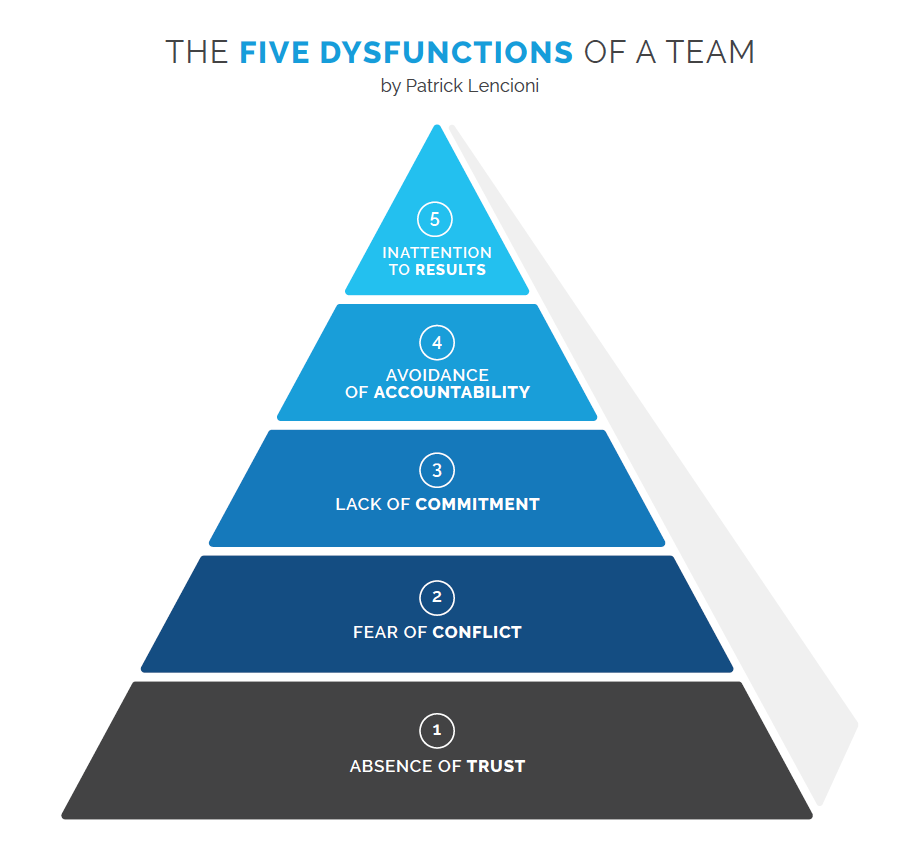The Five Dysfunctions of a Team
In his book, The Five Dysfunctions of a Team, Patrick Lencioni examines why effective teams are so rare and provides specific recommendations for eliminating barriers that lead to dysfunctional teams.
Lencioni's work outlines the causes of team dysfunctionality and what can be done to overcome each one.
The five dysfunctions are:
1. Absence of Trust
Teams who lack trust conceal weaknesses and mistakes, hesitate to ask for help, jump to conclusions about the intentions of others, hold grudges and dread meetings.
2. Fear of Conflict
A lack of trust leads to the fear of conflict. In these companies, employees worry more about politics and personal risk management than solving problems. Meetings are often boring because controversial topics are avoided.
3. Lack of Commitment
When teams become conflict-avoidant, a fear of failure develops. These teams have difficulty making decisions and second guess themselves.
4. Avoidance of Accountability
Second-guessing and a lack of common objectives then leads to an inability to develop standards for performance. Team members miss deadlines and deliver mediocre work.
5. Inattention to results
When teams lack focus and clear objectives, team members stagnate, become distracted, and focus on themselves.
Level 1 : Absence of Trust
The bottom of the pyramid and the launchpad for all five dysfunctions is an absence of trust. While an absence of trust is something that could have occurred in any company at any time, ensuring trust among your team is more important than ever in today’s work environment.
Edelman’s 2021 Trust Barometer shows that the global pandemic has put trust to the test and that none of the societal leaders tracked by Edelman, including government leaders, CEOs, journalists or religious leaders, are trusted to do what is right. 56 percent of respondents believe that business leaders are purposely trying to mislead people; and the credibility of CEOs, Boards of Directors and even regular employees has all dropped.
However, the Trust Barometer also found that although only 12 percent of people will believe communications from employers the first time they hear new information, 49 percent of people will believe it after it is repeated once or twice. All is not lost.
For business leaders, trust and effective communication is possible. As Nancy Kane explains, communication must be thoughtful, and planful, which is as important as ever now that video has become standard. By communicating with humanity, empathy and transparency, leaders can establish cultures of trust, even during times of crisis.
Originally published July 24, 2019. Updated April 27, 2021.
Share this article

